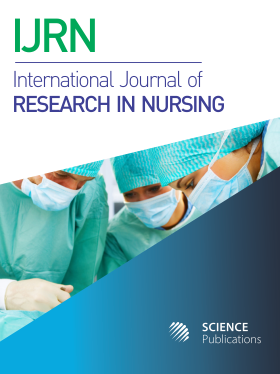Shortage Level of Matching Kidney and Pancreas Organs for Implant is Estimated
- 1 Texas State University-San Marcos, United States
Abstract
Organ transplants are increasingly done worldwide. The organ donors might be dead or alive. There are legal, ethical, medical and administrative issues to procure organs and to transplant them. However, the donor’s organs must fully match the recipient’s requirement before they are quickly transported as the time is the essence. The kidney or pancreas organs are more in demand. When a recipient needs two organs such as the kidney and pancreas, the requirements are made tighter and the process of finding both organs becomes tougher and longer. The patients register and wait with a hope to find both matching organs to be implanted. Because of their need for two matching organs, the patients’ waiting time prolongs. In general, the number of waiting patients, y = 0,1,2,...., for r = 1,2,...., number of matching organs follows a negative binomial frequency pattern with (1-p)r denoting the chance of finding r matching organs by any one waiting patient and py denoting the collective chance for y patients not finding r organs. In reality, there is always a shortage of organs for waiting patients. When there is a shortage level, 0≤Φ<1 of organs of the types from the living/dead donors increases, the chance for all the y waiting patients of not finding r organs should increase by a factor of 1-Φ and the chance for any single patient to find r organs decreases accordingly. This idea triggers a need to tweak the negative binomial distribution and it is done in this article. The data for USA indicate that the kidney and pancreas implantations occur within 30 days for some patients in some states and they could take even longer than 5 years for other patients in other states. This article estimates and illustrates the importance of shortage level, Φ to configure the chance of implants for patients in each state (including D.C. and Puerto Rico) of USA, with an innovative probability model. A model is necessary and it is created since the model is defined as an abstraction of the reality. The created new model in this article is named Tweaked Negative Binomial Distribution (TNBD). The properties of TNBD are derived and utilized to estimate and illustrate the shortage level, Φ of kidney and pancreas organs among the Eastern (including D.C. and Puerto Rico), Central, Mountain and Pacific (including Hawaii and Alaska) states in the USA. The likelihood ratio based hypothesis testing procedure is devised, explained and demonstrated to assess the statistical significance of the estimated shortage level, Φ of kidney and pancreas organs for the states in each of the four time zones in USA. The statistical power of accepting the true 50% shortage level (that is, Φ = 0.5) is evaluated for the states in each of the four time zones of USA. Then, the chance of getting no transplant of kidney and pancreas organs when there is zero shortage level and the odds, of no waiting to get both kidney and pancreas transplant with the existing estimated shortage level of organs for the states in USA are explained. In the end, comments and conclusions are stated.
DOI: https://doi.org/10.3844/ijrnsp.2013.40.46

- 3,358 Views
- 2,222 Downloads
- 1 Citations
Download
Keywords
- Negative Binomial Distribution
- Survival Probability
- P-Value
- Power
- Test of Hypothesis
- Data Analysis
